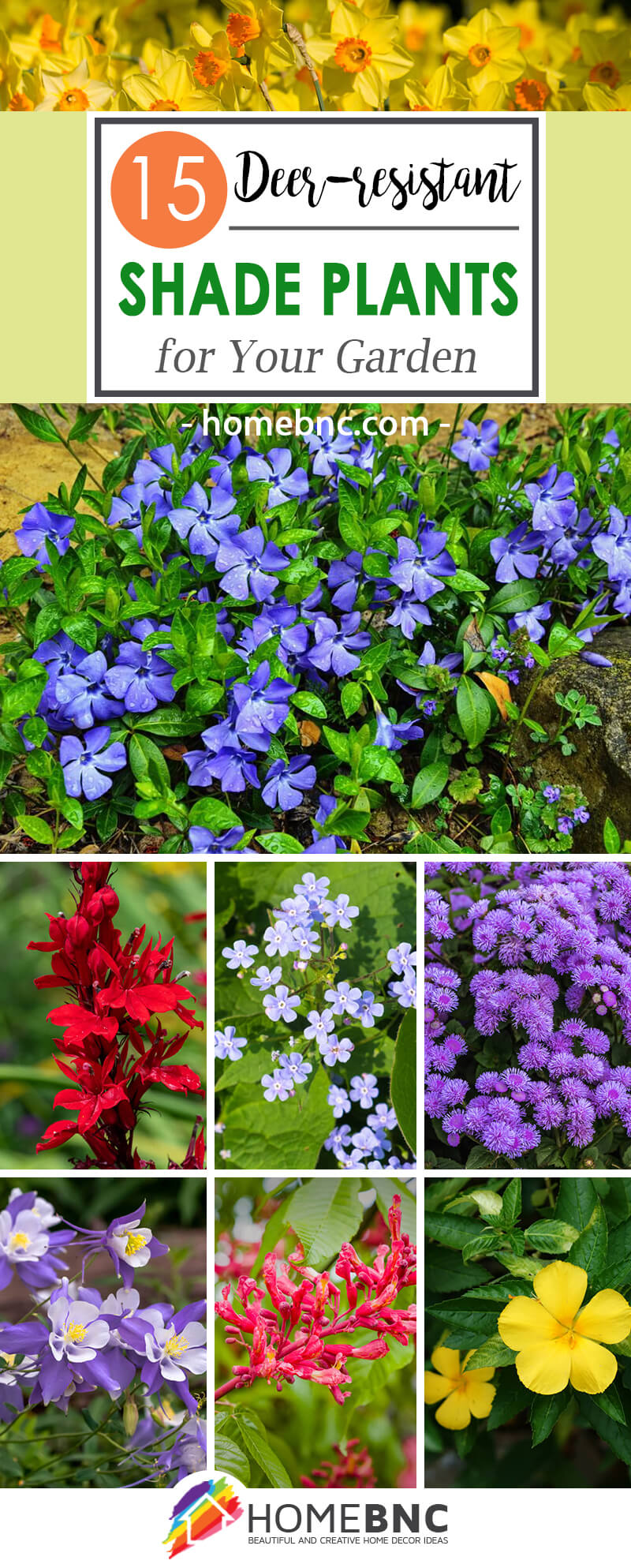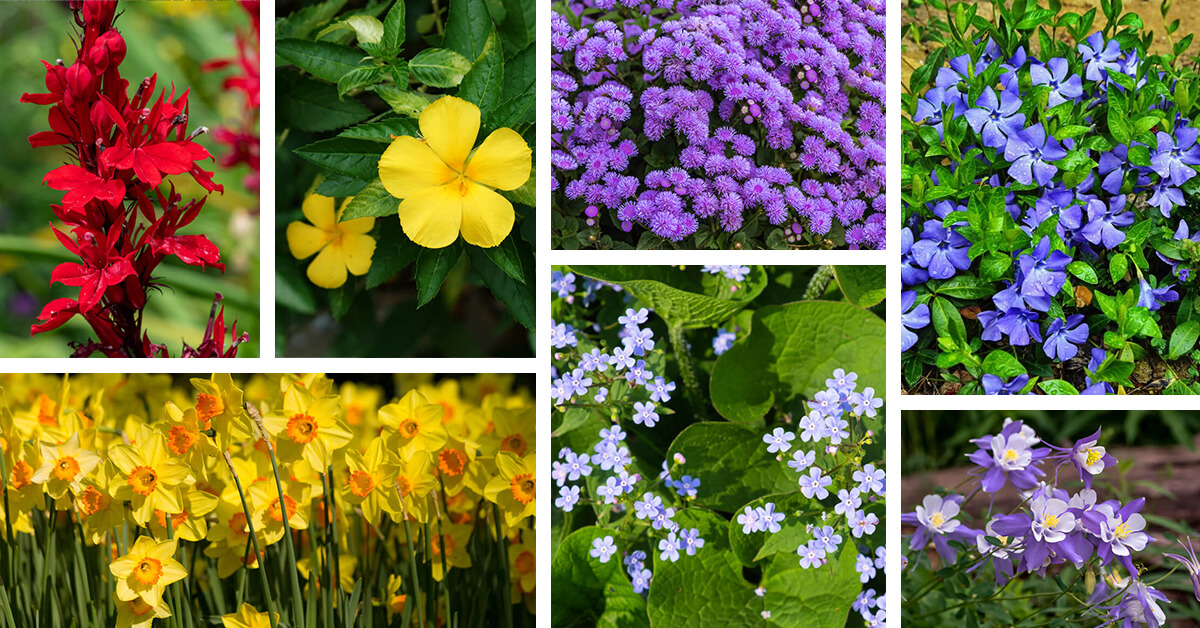Gardening for wildlife is usually considered a good thing – after all, what gardener wouldn’t be flattered to see hummingbirds, butterflies, and even frogs enjoying, enriching, and protecting her painstakingly-planted garden? Unfortunately, not all wildlife are as well-behaved as these examples. Exhibit A: deer (Odocoileus spp.). They can be a serene and majestic sight at first – until you see they’re devouring your landscaping!
Things are even harder if your garden is shady, because many shade-tolerant plants are not just nutritious but full of water, making them almost irresistible to a thirsty deer on a summer day. But never fear: there are plenty of beautiful, shade-tolerant plants that your local deer won’t look twice at, either because their foliage is too tough to eat, too low to reach, or toxic.
Below you’ll find a selection of the best and most deer-proof ornamentals for shade gardens in any climate, as well as some frequently asked questions about cultivating a deer-resistant landscape.
Note: all the plants in this list are deer-resistant. Deer will not eat them under normal circumstances, but you may notice a few bites, especially in very dry weather. Any plants on this list will bounce back quickly from whatever minimal browsing they’re subjected to, which is an important part of “deer resistance.”
Key Takeaways
- Stay away from plants that actively attract deer, like hostas, lilies (“deer bon-bons”), phlox, and dahlias. (Yes, dahlias – see FAQ for more.)
- Deer generally avoid plants for one of four reasons: either they’re too low-growing for deer to reach easily, their foliage is tough or spiny, making them unpalatable, they’re strongly scented (which deer don’t like very much, unlike people), or they’re poisonous.
- Toxic plants are the most “deer-proof” of all, but beware: most of these plants are toxic to other mammals as well, and could easily poison your dog, cat, or toddler. Be careful about planting them if you have any curious critters you want to keep safe!
- One more category of plants that generally resists damage from deer are those that go dormant or die back to the roots in the winter, when there are few green plants for deer to eat, or emerge late in spring or summer, after mating and fawning season have ended. These plants might still get nibbled – but they usually aren’t severely damaged.
- Ultimately, there’s no such thing as a plant no deer will eat under any circumstances. Under adverse conditions, or if deer populations in your area are very high, you might still see browsing damage. Pick plants that aren’t just unpalatable to deer but “deer-resilient,” i.e., plants that will bounce back if they lose some foliage to a very hungry (or just not that bright) deer.
15 Shade-Loving Ornamentals To Keep the Deer Away
1. Cardinal Flower (Lobelia cardinalis)

Cardinal flower is a native, shade-loving plant whose namesake bright red flowers bloom profusely throughout summer, attracting all kinds of pollinators, from bumblebees to hummingbirds (though ironically not cardinals!). It’s also moderately toxic to deer, who will not eat it unless they are extremely desperate. It gets a “B” from Rutgers, meaning that it is very rarely damaged.
One thing to note about cardinal flower is that it is a very thirsty plant, and will not tolerate dry soil. It will do best in slow-draining soils or locations with afternoon shade, where plants will be protected from the afternoon sun, and make sure to keep that soil wet!
2. Corydalis (Corydalis)
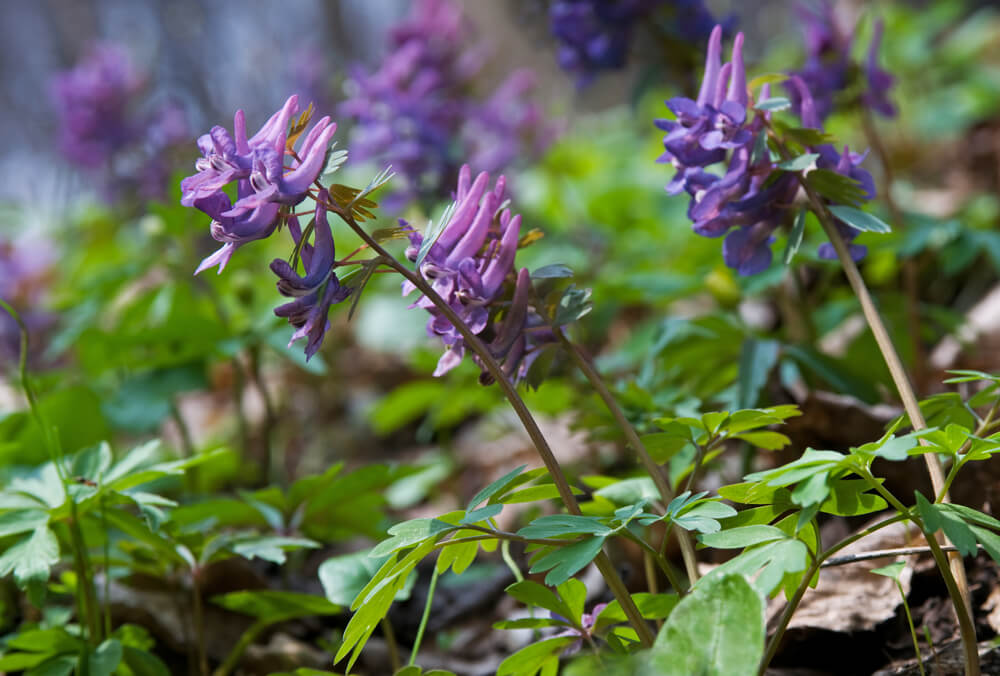
Corydalis is the standout star of the deer-proof shade garden: few plants are less appetizing to deer (Rutgers gives it an “A” rating), even fewer are more shade-tolerant. Of its few competitors, none can match corydalis for aesthetic appeal: its fern-like foliage and large, tubular flowers are unlike those of any other common ornamentals. As if that weren’t enough, a number of species of corydalis are quite drought-tolerant, and thrive even in dry shade.
One thing corydalis will not tolerate is poorly-drained soil, and it won’t thrive in humid or swampy climates like the Deep South. On the other hand, in favorable conditions, it has a tendency to self-seed, and even to spread aggressively, so you’ll want to monitor your corydalis plantings to ensure that they don’t get ideas above their station.
3. Wild Ginger (Asarum canadensis)
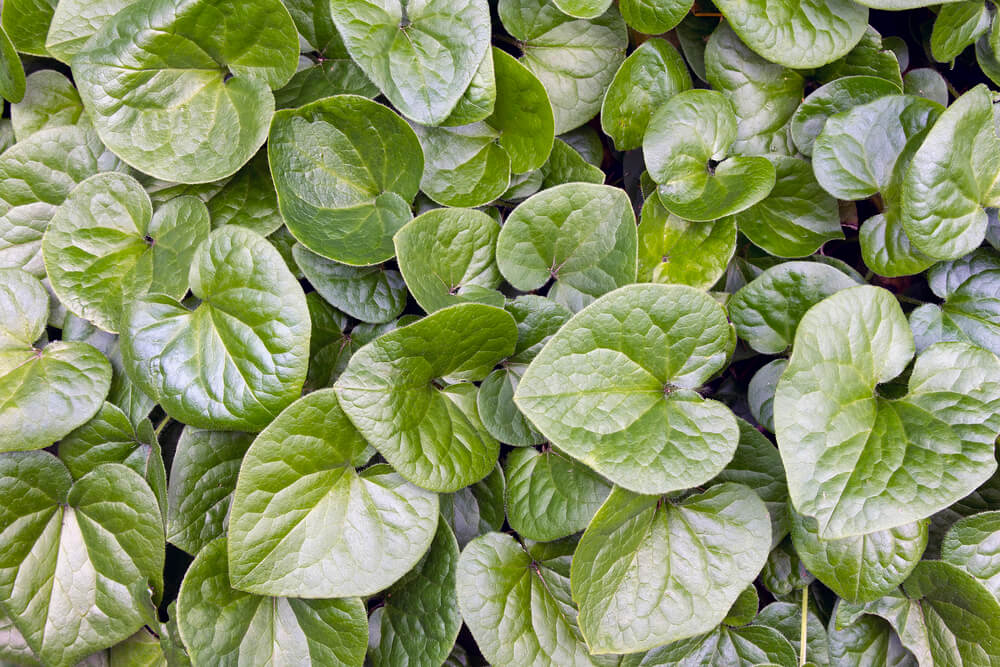
Wild ginger has a lot going for it. First of all, it’s a North American native, and grows best in the deep shade of eastern woodlands. Second, it’s highly deer-resistant, due to the volatile compounds found in its leaves and roots. Third, it fills an important structural niche in the shade garden: it forms a beautiful, lush ground cover, with large heart-shaped leaves that somewhat resemble violets (Viola spp.).
But wait, there’s more! Although it’s highly unpalatable to deer, wild ginger is eminently edible for people, and its roots were formerly used as a substitute for ginger by frontier settlers. All of this ought to place wild ginger high on any gardener’s list of shade-tolerant plants that won’t disappear in the presence of deer!
4. Royal Fern (Osmunda regalis)
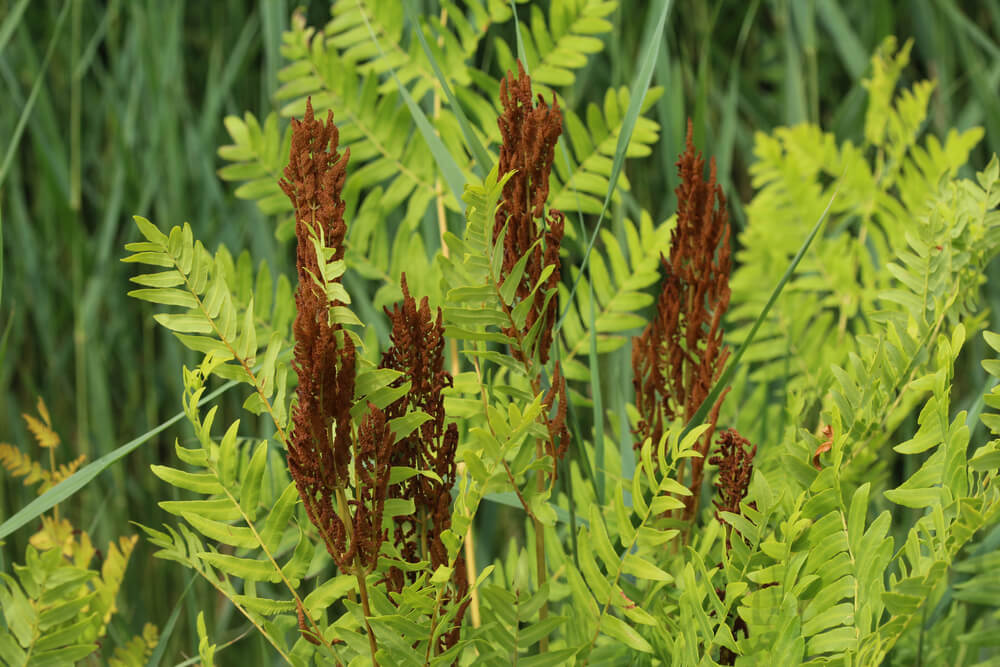
Royal ferns are hardy, adaptable, shade-loving plants that are found virtually worldwide, including the eastern United States. Like many ferns, they’re toxic to deer, and also highly resistant to rabbit damage.
In areas with cool summers, royal fern can be grown in full sun as long as it’s given plenty of water. In the South, it will be happiest in deep shade, ideally on rich, acidic soils. It can perform quite well on swampy or slowly-draining soils, so it makes a good addition to a rain garden or that shady-and-mucky “problem area” at the back of your garden.
5. Columbine (Aquilegia spp.)
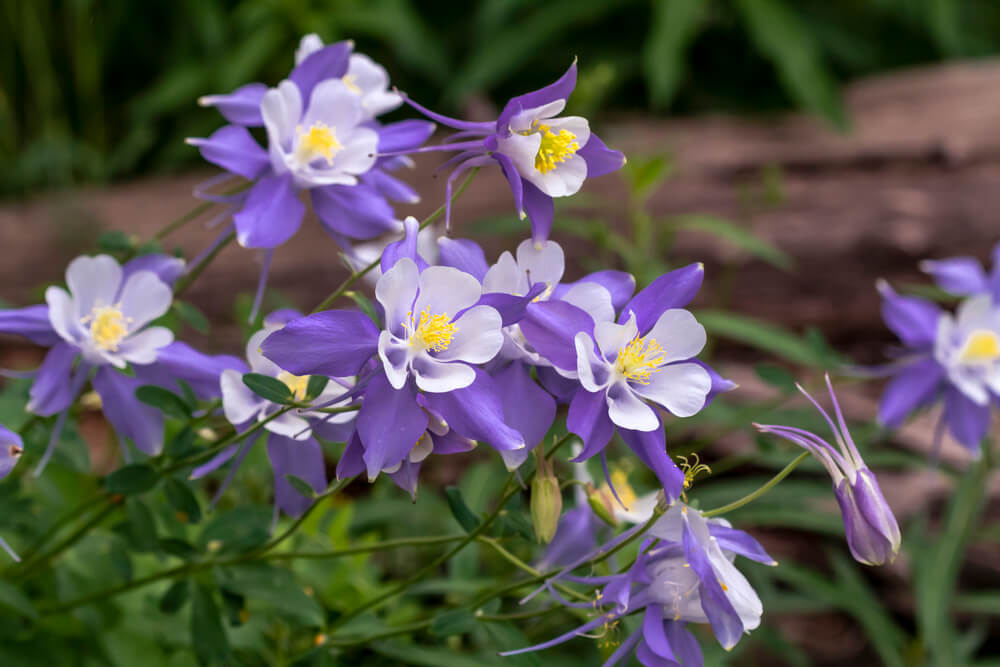
Columbines are shade garden classics, with good reason: they’re hardy and adaptable to almost any soil situation, from mucky to rocky, and their unique blooms come in a head-spinning array of colors. Long after the flowers drop off, their cool, fern-like foliage provides an appealing ground cover in even the deepest shade.
Deer will eat columbine under certain circumstances, but they are too low-growing to attract the notice of most deer, and their thin stems don’t provide much to chew on, so they aren’t preferred. They also die back to the ground in winter, which means that they’re essentially invisible when deer are at their hungriest.
6. Lungwort (Pulmonaria officinalis)
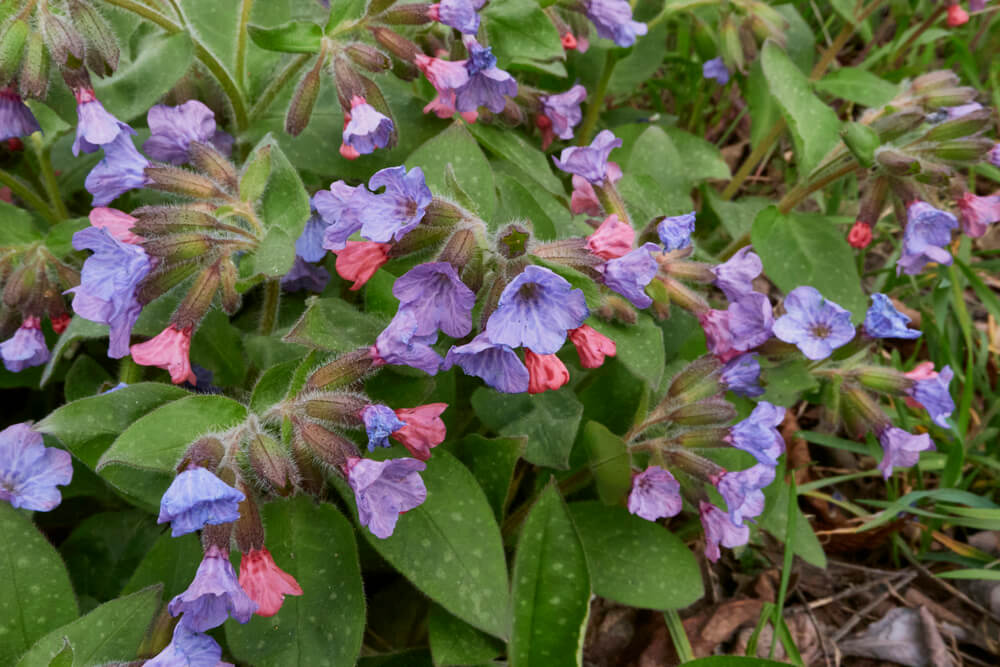
Lungwort gets its name from its use in ancient times as a remedy for diseases of the lungs, according to the “doctrine of signatures” by which the plant’s mottled foliage – which, according to medieval apothecaries, looked like a diseased lung (yuck!) – told of its medicinal uses. Today, it’s more popular as an ornamental – and more importantly for us, one that takes both deep shade and hungry deer in stride with no problems!
While it’s not the most spectacular or immediately eye-catching garden plant, lungwort has a “slow burn” beauty that should be welcome in any garden. Its variegated leaves contrast beautifully with its small, dark, blue-purple flowers, and it’s especially effective when massed as a ground cover. Best of all, its low stature (and bitter, astringent taste) mean that deer won’t give it a second look!
7. Ground Ivy (Glechoma hederacea)
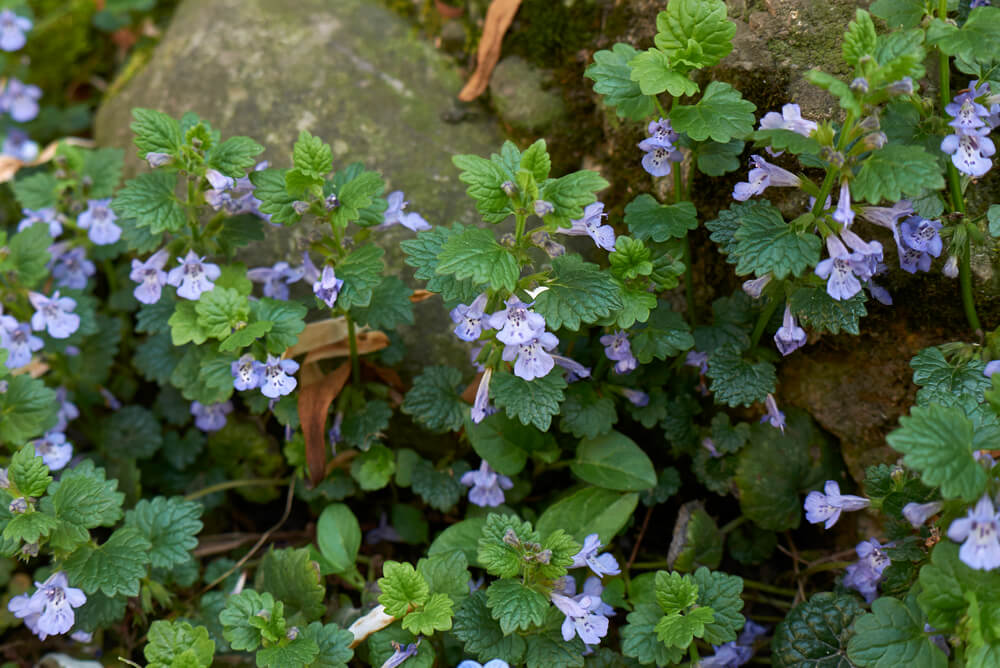
Ground ivy is no longer as popular a garden plant as it once was. Though native to Europe, it’s naturalized throughout North America, mostly as a result of its deliberate introduction in the herb gardens of early settlers. It’s a member of the mint family (Lamiaceae), and like most plants in this family it has a strong, almost medicinal odor that deer can’t stand.
This, along with its attractive, ivy-like foliage (where do you think the name comes from?) and small but pretty blue flowers, makes it a great choice for a durable, evergreen ground cover that needs no mowing and – unlike its namesake – won’t disappear down the gullets of greedy deer.
8. Buckeye (Aesculus spp.)
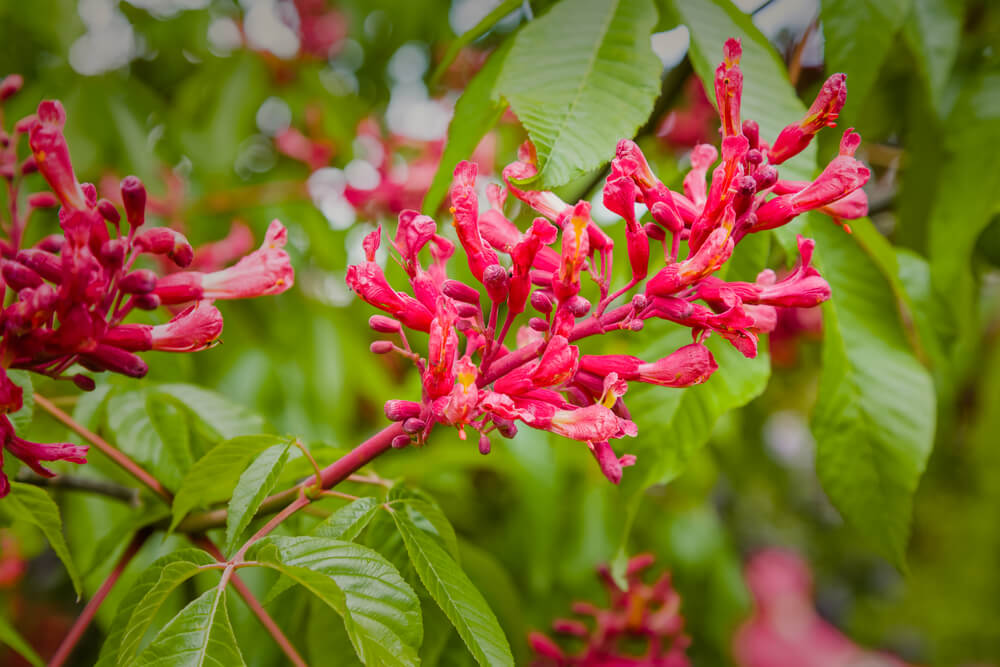
Buckeyes are shrubs native to the southeastern part of the country, where they inhabit riparian woodlands from Texas to Virginia. They’re used to warm, shady patches, but the most common ornamental (bottlebrush buckeye, A. parviflora) and wild (red buckeye, A. pavia) varieties are cold-hardy to zone 5.
Buckeyes’ showy clusters of flowers come in white, yellow, and red, and appear much earlier than most ornamentals. (This is an adaptation to growing in forests – they do most of their growing before their taller neighbors leaf out.) They’re also remarkably deer-resistant, and red buckeye is drought-tolerant as well.
9. Narcissus (Narcissus spp.)
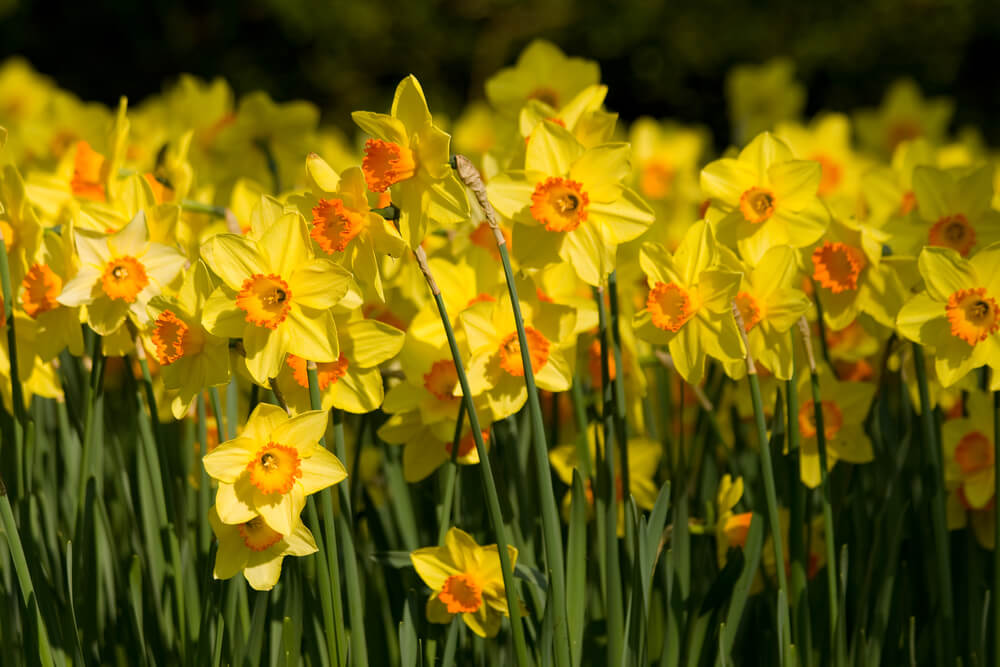
Daffodils, jonquils, and paper-whites are all members of the genus Narcissus. Narcissi (narcissuses?) have been popular ornamentals pretty much since the invention of modern gardening, but these beauties are femmes fatales: like a number of other related plants, the genus Narcissus contains toxic lycorine, which can be fatal to many larger mammals (including humans).
This makes them great deer-resistant plants, since deer give them a wide berth, even when they’re hungry – and they come in an amazing range of colors and bloom shapes, many of which are quite shade-tolerant. Jonquils and narcissus are the most shade-tolerant, but many species and varieties will do fine in afternoon shade.
10. Periwinkles (Vinca minor)
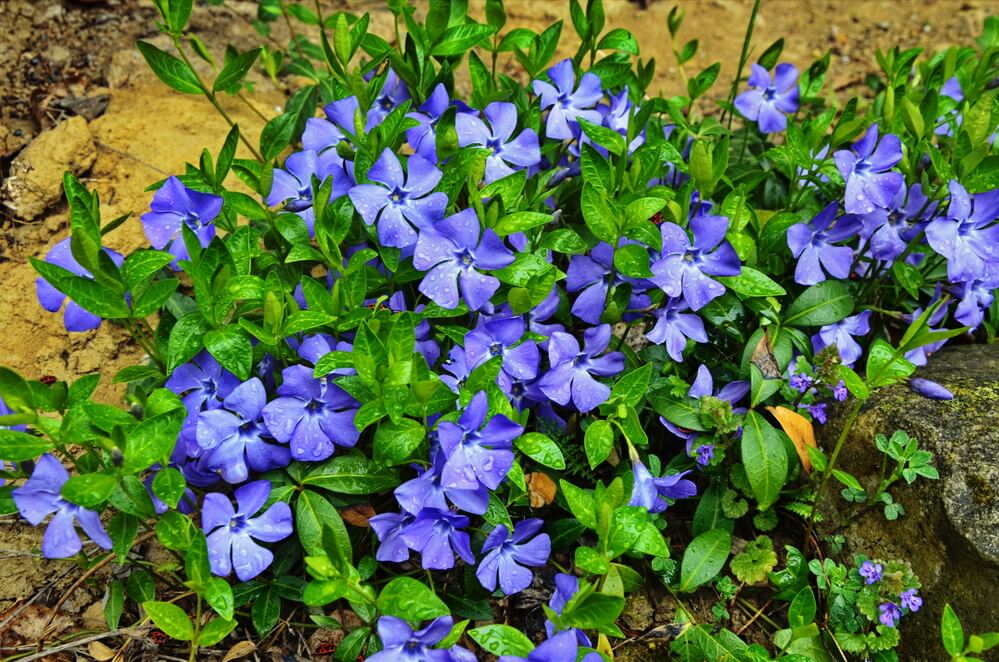
If you’re looking for a shade-hardy, deer-proof ground cover, you could do a lot worse than periwinkles. They check both these boxes, but better yet they’re evergreen throughout most of their range, and their blooms are so beautiful they became their own color! Periwinkles do have one drawback, which is that they have the tendency to become weedy and even invasive, so you’ll want to monitor their growth to make sure they don’t get out of hand.
If you’re really hoping for that “periwinkle look” for your yard, but are worried about them becoming invasive, try Madagascar periwinkles (Catharanthus roseus). They have a similar appearance, but are much less cold-hardy, meaning that they are much less likely to cause trouble.
11. Inland Sea Oats (Chasmanthium latifolium)
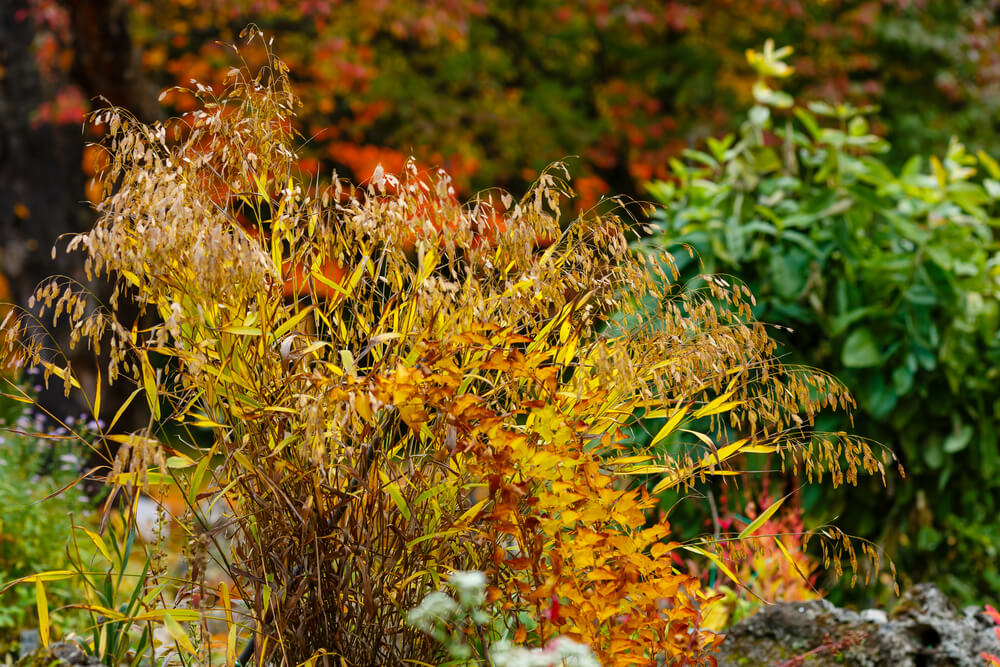
“Inland sea oats” is a strange name for a plant that’s not related to sea oats, nor domesticated oats, and looks nothing like either one – but name aside, it’s an excellent choice for any shade garden, even if deer aren’t a problem. Its bamboo-like foliage is quite lush for a grass, and contrasts beautifully with its coppery inflorescences, which are often used in flower arranging.
Inland sea oats are considered highly deer resistant, but they’re great for many other kinds of wildlife. They’re a native species, and play an important role in woodland and riparian ecosystems in the eastern US, which means they’re not only beautiful and browse-proof, but beneficial, too!
12. Siberian Bugloss (Brunnera macrophylla)
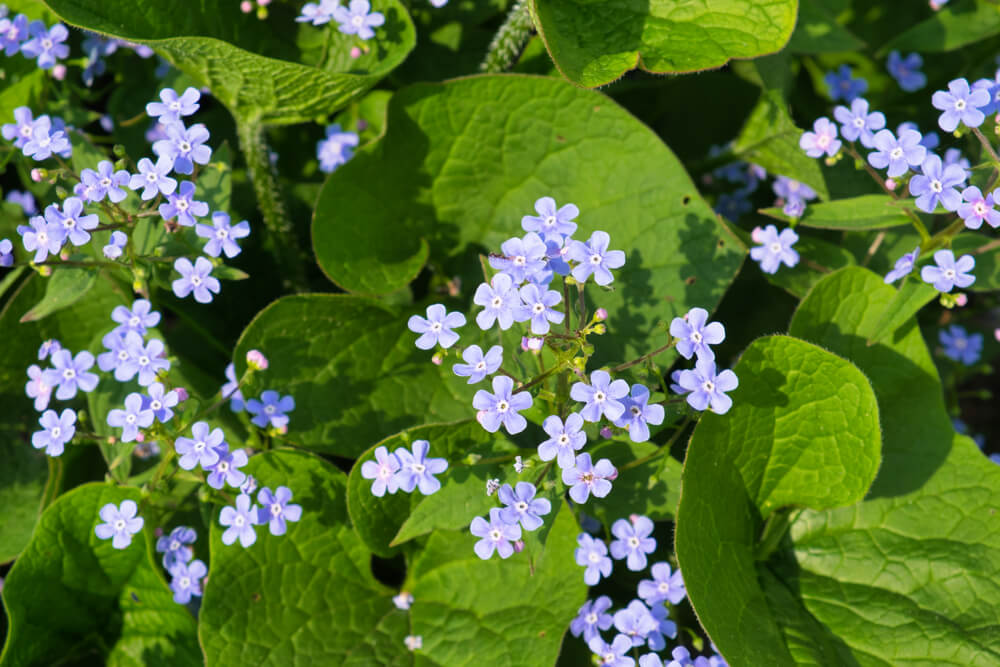
Siberian bugloss is one of the most shade-tolerant plants on this list, and is often planted as ground cover in gardens that don’t get any direct sunlight at all. It’s slow-growing but incredibly hardy (as you might expect, given that it’s native to Siberia), and will be happy anywhere between USDA zones 3 and 8. While its delicate pale-blue flowers are quite beautiful, its lush, heart-shaped foliage has year-round aesthetic appeal as well. (Its specific epithet, macrophylla, means “large-leaved.”)
If you feel the leaves of Siberian bugloss, you’ll notice that their texture is quite rough. This makes them unpalatable to deer and rabbits, who mostly leave them alone – which makes bugloss an excellent browse-proof plant for your shadiest spots.
13. Bugleweed (Ajuga reptans)
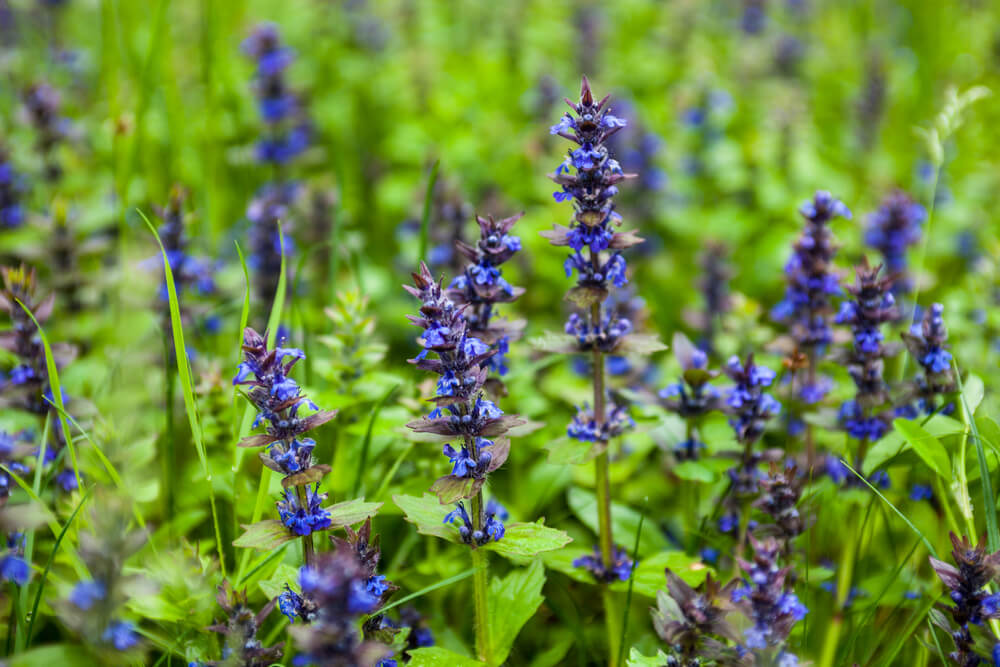
Bugleweed has long been a standby for shade gardens because of its fast growth and hardiness, which make it a great ground cover. It blooms beautifully in spots where it gets a few hours of morning sun, but will grow just fine even in deep shade. Its vigorous growth makes it essentially “self-weeding” too, because it chokes out any weeds that might pop up in its midst.
Although it’s not toxic, bugleweed is pretty unappetizing to deer. Its leaves grow so low to the ground that deer have to really reach to nibble it – which just isn’t worth it for most of them, because they’re also aromatic and quite bitter. You can rest assured your plants will be safe from all but the most desperate deer.
14. Yellow Sage (Salvia koyamae)
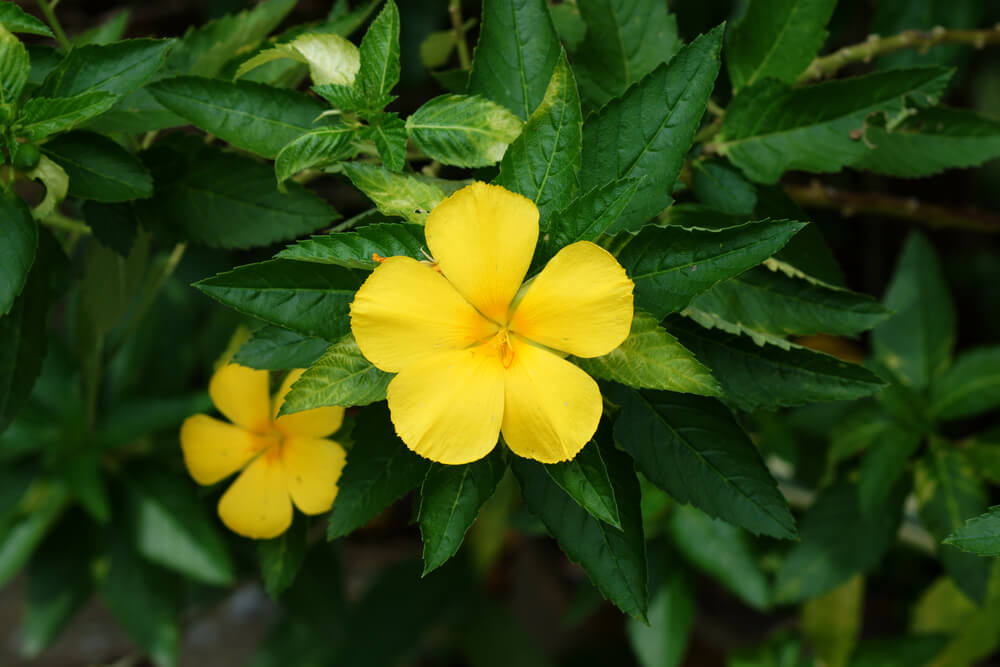
As mentioned in the introduction, aromatic plants are great for deer-resistant gardens because they are not only unappealing but actively repellent to deer. Most sages (Salvia) fall into this category, and can help make your garden less tempting to passing deer. Unfortunately, most sages are full-sun plants, and won’t do well in shade gardens.
However, yellow sage is a definite exception. It’s native to Japan, but has been exported widely because of its ease of care and shade tolerance – not to mention its attractive and aromatic yellow flowers, which tempt all the right kinds of wildlife – i.e., pollinators – while keeping the wrong ones (deer and rabbits) at bay.
15. Ageratum (Ageratum houstonianum)
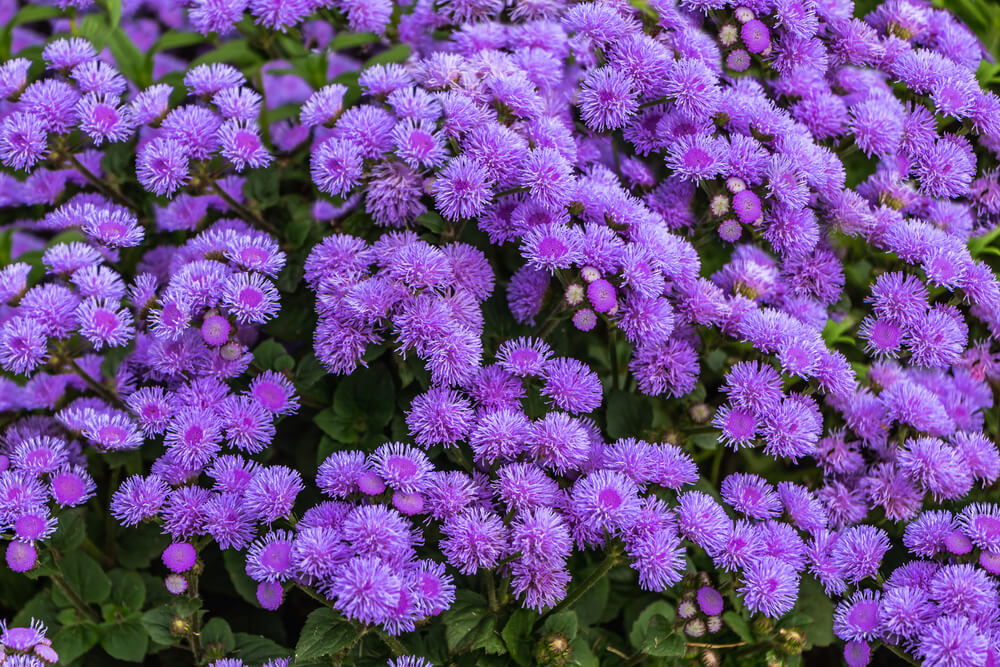
Ageratum, or floss flower, is a native wildflower in the sunflower family (Asteraceae), and quite easy to grow – in fact, throughout much of the southern US it’s considered something of a weed. In gardens, however, it really shines, not just because of its hardiness and fast growth but its profuse, long-lasting blue flowers, which bloom in fall and are an important food source for native butterflies. Better yet, it’s toxic to deer, meaning that it’s almost never damaged by browsing.
Ageratum is just one of a number of closely related plants that can provide similar benefits to your garden: other options include dusty miller (Senecio cineraria), blue mistflower (Conoclinium coelestinum), and Gregg’s mistflower (Conoclinium greggii). All of these contain the same compounds that are toxic to deer, and will make great additions to your deer-proof garden.
[wp-faq-schema title=”Frequently Asked Questions About Deer-Resistant Shade Plants” accordion=1]15 of the Most Deer-Resistant Plants for Your Shade Garden
Unsolicited visits to your garden by deer might be unavoidable – but that doesn’t mean that browsing damage is, too. Like people, deer have dietary preferences, and your garden is only as vulnerable to deer as your plants are appetizing. While there’s no such thing as a truly “deer-proof” garden, choosing plants that are hard to eat (like Siberian bugloss), foul-tasting (like ground ivy), or outright toxic (like narcissus) will discourage all but the hungriest and most foolhardy deer.
